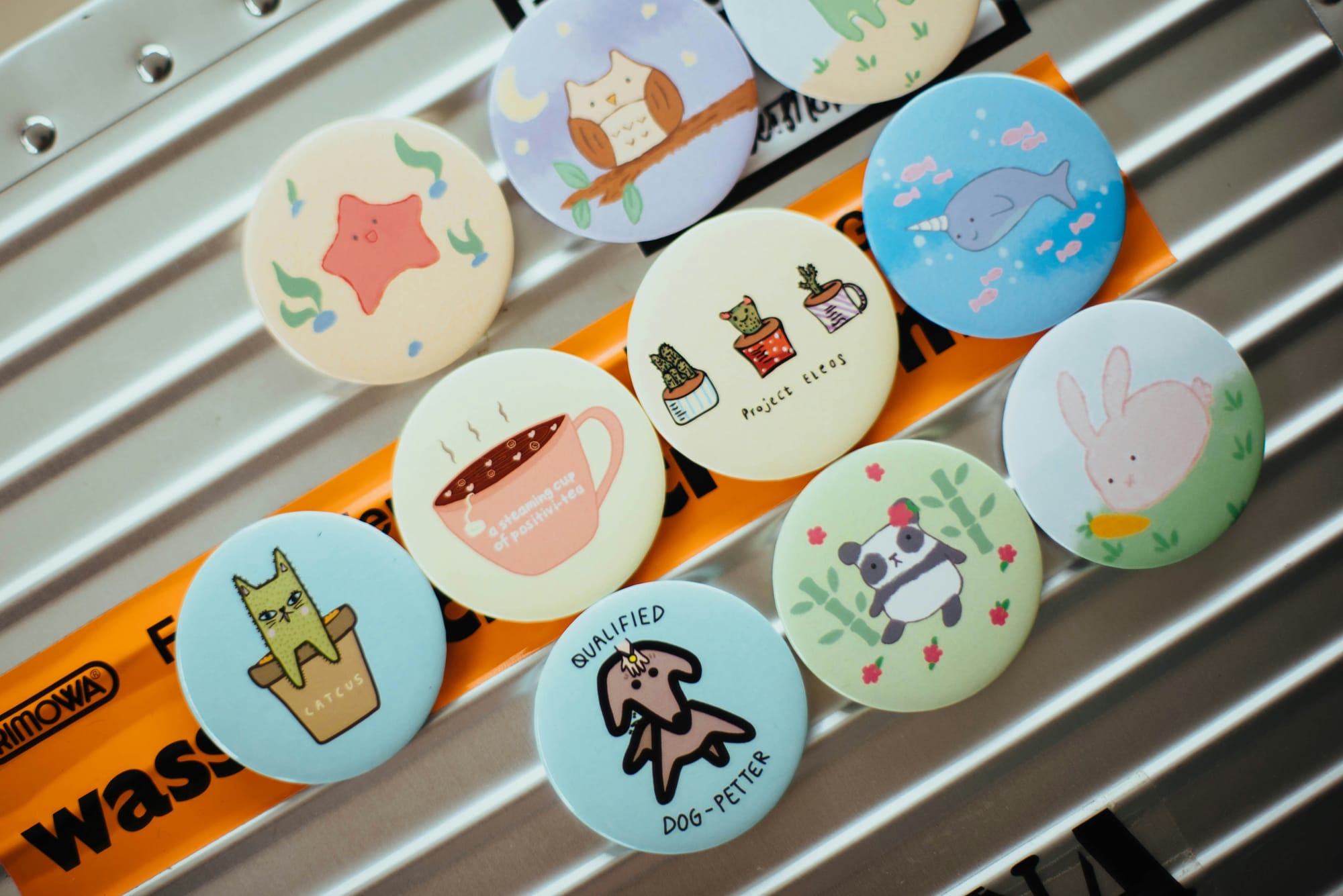Leveling Up - Why Gamification is Key to Product Engagement

You've felt it before - that sense of engrossing focus and drive to keep playing when a game hooks you. Games tap into deep psychological motivators like achievement, competition, and reward gratification. But what if you could bottle that motivational power for productive ends beyond just entertainment?
That's the core idea behind gamification - applying game mechanics like points, levels, challenges, and rewards to non-game experiences to increase engagement. From completing tasks on productivity apps to hitting daily activity goals in fitness trackers, gamification uses the stickiness of games to shape behaviors and build habits around products and services. When implemented thoughtfully, it can motivate desired user actions, boost customer loyalty, and uncover valuable behavioral insights, making the experience a bit more fun. Let's explore how to wield the power of gamification effectively.
What is Gamification
Gamification is the application of game mechanics and design principles to non-game contexts. The core premise is to leverage the motivational power of games in order to make typically mundane or tedious tasks and experiences more engaging, motivating, and fun.
This involves taking the compelling elements found in many games - such as points, levels, badges, leaderboards, challenges, narratives, and reward loops - and applying them as motivational affordances within other digital products, services, or processes. The goal is to tap into people's innate desires for achievement, competition, status, self-expression, and enjoyment in service of real-world objectives.
How Gamification works in different industries
Education - Learning apps/platforms use badge rewards, skill levels, leaderboards, and storylines to engage students.
Workplace - Corporate training, wellness programs, and productivity tools incorporate game elements like points, quests, and competitions.
Health/Fitness - Apps like FitBit and Zombies, Run! use real-world activity tracking combined with game narratives and challenges.
Loyalty Programs - Companies reward purchases and engagement with points, levels, and virtual prizes/discounts.
News/Media - Publishers use game mechanics like Progress bars and achievements to promote content consumption.
By making an experience more interactive, rewarding, and game-like, organizations can increase motivation, influence key behaviors, build brand engagement, and uncover valuable user data - all while ideally making the process more enjoyable.
What are the benefits of Gamification?
Increases user engagement and retention
- Introduces compelling feedback loops that keep users invested and coming back
- Taps into motivators like achievement, competition, and curiosity to drive habitual usage
- Makes typically rote tasks more interactive and game-like to sustain interest
- Provides a sense of progressive mastery and momentum that gets users hooked
Motivates desired user behavior
- Applies principles of operant conditioning through rewards and incentive schedules
- Nudges users towards targeted actions through goal-setting and challenges
- Creates a compelling, interactive experience around behavioral objectives
- Fosters intrinsic motivation around activities through autonomy and mastery
Enhances brand loyalty and product stickiness
- Increases switching costs as users invest effort and don't want to lose progress
- Associating a brand with positive feelings of fun and achievement
- Cultivates habitual product usage by making the experience addictive
- Creates investment in the gamified ecosystem through earned virtual assets
Provides insights through user data/analytics
- Collects detailed behavioral data on how users engage and progress
- Reveals trends, funnels, and dropoff points to optimize experiences
- A/B testing allows iterating on which game elements resonate most
- User segmentation enables personalizing content and incentives

Key Gamification elements
Points, badges, levels, leaderboards
- Points are a virtual currency awarded for achievements and engagement
- Badges are visual icons representing specific accomplishments
- Levels indicate progress and status, unlocking new content/privileges
- Leaderboards allow users to view their ranking compared to others
Challenges, quests, progression tracked
- Challenges propose specific goals or tasks for users to complete
- Quests string multiple challenges together into a narrative journey
- Progress is visually tracked, showing how close users are to objectives
Feedback loops, rewards schedules
- Frequent reward cycles positively reinforce desired user behaviors
- Variable reward schedules provide an element of surprise and uncertainty
- Clear feedback at each interval helps users understand how to progress
Narrative, players/roles, competition
- The overarching story adds context and meaning to the experience
- Users can adopt certain profiles, identities, or roles
- Social sharing and leaderboards facilitate friendly competition
- Players can form teams, or groups or join events together
By combining multiple game elements like these, experiences become more compelling, interactive, and gratifying for users to engage with habitually.
Applying Gamification to Product Design
Identify your core user motivations
When gamifying a product experience, it's critical to first understand what intrinsically motivates your target users. Are they driven by mastery and progression? Competition and status? A noble narrative or altruistic goals? Different game elements will better align with different core motivations. User research like surveys and behavioral data can reveal these motivational needs.
Map game mechanics to user flows
With your motivational targets identified, you can strategically map specific game mechanics to the key user flows and actions you want to incentivize within your product. For example, earning badges may increase engagement with a particular feature, while leaderboards may drive competition around social sharing. Carefully consider how different game elements can enhance your product's core value proposition.
Balance motivation vs. possible drawbacks
While gamification leverages powerful psychological forces, it's important to strike the right balance. You don't want the wrong incentives leading to unintended behaviors. Poorly designed gamification can potentially frustrate users, fuel unhealthy obsession, or mistreat disadvantaged segments. Iterate to find the sweet spot between motivation and ethical deployment.
Design delightful, intuitive experiences
Game elements need to be implemented thoughtfully within the overall user experience. The experience should feel coherent and delightful rather than tacked on. Clear onboarding helps users understand the "game" layer. Intrinsic and unexpected delights support the extrinsic motivators. The visual design reinforces the game narrative. The goal is an intuitive experience that naturally hooks users.
Iterate based on usage analytics
Like games themselves, gamified experiences require continual monitoring and iteration based on how users engage. Analytics on everything from progression funnels to incentive optimization allow you to keep refining the experience over time. A/B testing different game mechanics is critical, as is segmenting users for personalized content and challenges as needed.
Real Product Examples
Here are a few examples of how gamification can actively engage users
Duolingo
The popular language learning app and website uses gamification extremely effectively
Progression System - Users level up through different stages across multiple language skills
Daily Rewards - Achieving a certain score earns lingots (virtual currency) each day
Streak Tracking - Duolingo tracks and incentivizes daily practice streaks
Badges/Achievements - Visual badges are awarded for accomplishments like learning new words
Leaderboards - Friends can compete against each other's progress on leaderboards
Immersive Learning - Language lessons are turned into fun, bite-sized game challenges
By gamifying the typically dry experience of language acquisition, Duolingo makes it addictive to keep practicing, leveling up skills, and maintaining streaks. The clear progression path, bite-sized lessons, and fun visual rewards hit all the right motivational notes.
Nike+ Run Club App
The Nike+ Run Club app gamifies the running and fitness experience through various game mechanics
Level System - Runners earn new levels by completing running "missions" of different distances
Challenges/Quests - The app provides constantly rotating challenges like "Run Every Day This Week"
Rewards/Badges - Completing challenges unlocks exclusive badges and other visual rewards
Social Features - Runners can share stats, compete on leaderboards, and give/receive kudos
Narrative Elements - The app has an overarching narrative of being part of a running "club"
Progress Tracking - Miles, paces, streaks, and other stats are meticulously recorded
By turning running into an interactive journey with quests, level-ups, and social competition, Nike motivates higher engagement with their app and running itself.
Pitfalls to Avoid in Gamification
Overuse of Extrinsic Rewards
While points, badges, and rewards can provide initial motivation, be careful of overreliance on extrinsic rewards. True long-term engagement comes from nurturing intrinsic motivation by making the core experience itself gratifying.
Gaming the System
Some users may attempt to "game" the system by exploiting loopholes or taking inauthentic actions simply to accrue rewards rather than for the intended purposes. Game mechanics need to be carefully balanced.
Demotivating Effects
Poorly designed gamification runs the risk of demotivating users, such as through overwhelming everybody with the same challenges regardless of skill level. Personalizing difficulty levels and incentives is important.
Alienating User Segments
Some user segments may not respond well to gamification at all. Testing across different demographics is crucial.
By being mindful of these pitfalls from the start and continually optimizing based on user engagement data, teams can create gamified experiences that feel empowering and delightful.
If Nothing else, Remember this
- Effective gamification requires thoroughly understanding your users' core motivations and mapping game elements thoughtfully to their existing behaviors and goals.
- The true power of gamification lies in its ability to make typically mundane tasks more engaging and gratifying by leveraging intrinsic psychological drivers like achievement, competition, status and simply having fun.
- Gamification can be a remarkably effective means of influencing desired behaviors and building product habit formation.
Thanks for reading, hope that you find this content valuable!! Please do share this with your friends & colleagues and subscribe to our weekly posts.
